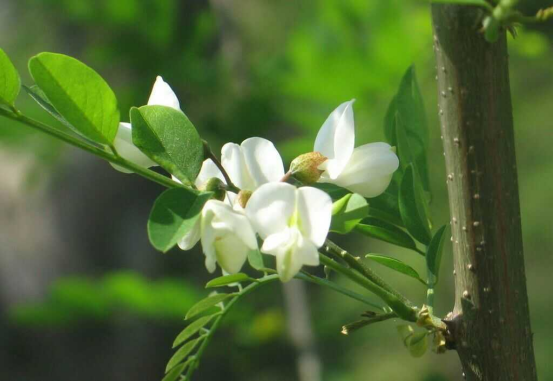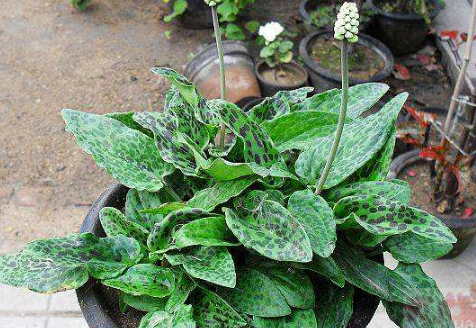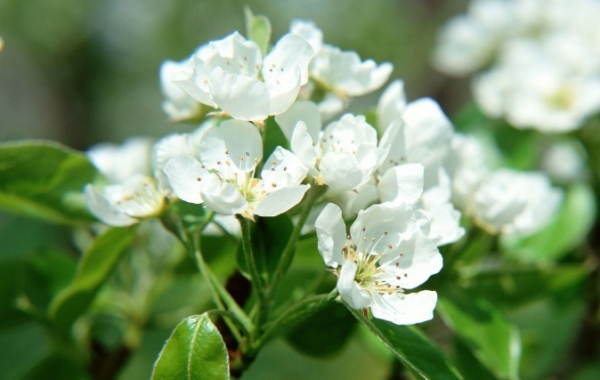Propagation methods of Sophora japonica
Sowing and reproduction
1. Sowing time:
It is usually planted in spring and in mid-early April. Average 10~12kg per mu
2. Sowing method:
Seed treatment, choose full and sufficient seeds to sow, soak the seeds in water about 80 degrees Celsius for one day and one night before sowing. 70~80cm spacing is more appropriate, need to carry out budding treatment, should pay attention to the seed turn over to keep the seed temperature consistent, generally wait for about seven days, the seed will have cracks, at this time sowing is the most appropriate. After sowing, the soil is flattened, so that the seeds are closely combined with the soil, and the film can be covered when there are conditions.

Cutting propagation 1. Cutting time:
The time of cutting propagation is the same as that of sowing and propagation, and it can also be advanced.
2. Insert selection:
Select healthy and viable locust tree branches for cutting, select 15~20cm is the most suitable, the upper incision cut flat, 1cm away from the bud bag, the lower incision cut into a 45-degree oblique mouth, 5mm away from the bud bag, divided into 50 roots as a bundle, soak the lower end with 50 mg / kg rooting powder solution for 3 hours, then remove it for 4 hours.
3. Cutting method:
It is most suitable for cutting according to the row spacing of 20 cm × 40 cm.
Culture methods and matters needing attention of potted Sophora japonica
Culture methods of Sophora japonica
Sowing seeds
Sophora japonica looks tall and big, but it can actually be propagated with seeds. Select ripe and full seeds, soak them in warm water for 24 hours, remove them, mix them in 2 to 3 times fine sand, and then germinate in an environment of about 20 ℃. In the process of accelerating germination, Fan Dong should be used frequently to ensure that the temperature above and below the seed is the same. After the seeds have germinated, they can be planted. It should be noted that the root system of Sophora japonica is longer, need to choose larger, deeper flowerpots, sowing it is best to plant in the open field, grow faster, and then transplant into the pot after growing into small plants.
Intermediate seedling
When the plant grows to 10-15 cm in the year of sowing, you can plant it in a pot and choose a deeper flowerpot to ensure sufficient sunshine. For some thin seedlings, they can be removed directly.
Fertilizer application
Adequate nutrients contribute to the growth of Sophora japonica. During the growing period of Sophora japonica, sprinkle a little grain fertilizer around the potted soil, and then water it, or directly irrigate it. If the flowerpot is small, water and loosen the soil in time after fertilization. The fertilizer in the family usually uses bean cake, horseshoe slices and sheep's horn, which are used after fermentation.
Pruning
The growth rate of Sophora japonica is moderate, and topping should be carried out in time to promote branching in the seedling growth period. Some aged and yellowing branches and leaves should be cut off in time.
Matters needing attention in the Culture of Flos Sophorae
Weeding in time
Perhaps because the locust flower has a strong inclusiveness, it grows a lot of weeds around it. Potted plants are the same, it is recommended not to use herbicides, which will have a certain impact on the growth of Sophora japonica. Loosen the soil manually, weed, and pull up the grass by its roots.
Pruning
Timely pruning helps to ensure that the tree shape of locust flowers is perfect, there is a very important point, potted locust flowers can be dwarfed by pruning, promote branches, so that each branch is full of flowers.
Culture methods and matters needing attention of Flos Sophorae
Latin name Sophora japonica Linn
Also known as Flos Sophorae
The plant kingdom.
Magnoliophyta, angiosperm phylum
Dicotyledonous class Magnoliopsida
Fabales of molluscs
Family Leguminosae Fabaceae
Subfamily Pteropodidae Faboideae
Clan Huai clan Sophoreae
Genus Styphnolobium
The distribution area originates from the north of China, and the Loess Plateau is the most common. It is distributed in Japan, Korea and Vietnam.
English name sophora flower
In a broad sense, Sophora japonica refers to the flowers and buds of legumes, but the blooming flowers are generally called "sophora flowers", also known as "sophora stamens", and the buds are called "sophora millet". Often planted on the edge of the house, roadside, widely cultivated in China, mainly in the north, mainly in the Loess Plateau and North China Plain, generally blooming in April-May every year, florescence is generally about 10-15 days. Foreign locust flowers have a good ornamental value, every time the flowering comes, a string of white locust flowers covered with branches, the air is filled with a touch of elegant fragrance, refreshing. Ancient Chinese poems related to locust flowers, such as "curl autumn wind, locust flowers half into fruit" (Bai Juyi "autumn"), "wind dance locust flowers falling in the imperial ditch, Zhongnan Mountain color into the city autumn" (Zilan "early Autumn"), these poems sing about the native species of Robinia pseudoacacia, not Robinia pseudoacacia or Robinia pseudoacacia, because Robinia pseudoacacia was introduced into China from North America in the second half of the 19th century, and this problem must be clearly analyzed.
1. Plant characteristics
The locust flower shrinks and curls, and the petals are scattered. Calyx campanulate, yellowish green, apex 5-lobed intact; petals 5, yellow or yellow-white, 1 larger, suborbicular, apex retuse, the other 4 oblong. Stamens 10, of which 9 basally connate, filaments slender. Pistil Terete, curved. Light. The breath is slight, the taste is slightly bitter. Sophora japonica (Robinia pseudoacacia) is a multiple flower, raceme, butterfly-shaped Corolla, in full bloom in clusters, overlapping overhanging. Florets much wrinkled and curly, petals scattered, intact calyx campanulate, yellowish green, apex 5-lobed; petals 5, mostly yellow or yellow-white, but also other colors such as purplish red (see picture), usually 1 piece large, suborbicular, apex retuse, the other 4 pieces oblong; stamens 10, of which 9 basally United, filaments slender; pistil Terete, curved.
- Prev

Culture method of oil lily
1. The light oil lily likes light very much, and its growth status is closely related to the light. The plants with sufficient light are cuter and shorter, and the lack of light will make the plants grow too long and affect the ornamental plants. If the new leaf is wider and lighter than the old one, the plant needs a lot of light.
- Next

Matters needing attention in the culture of Camellia sinensis
The watering cycle is usually once a week to keep the soil moist, and the growing period of Platanus orientalis has a large demand for nutrients, so we should apply fertilizer in time to provide nutrients to promote its flowering and growth. The suitable temperature for its growth is 20-28 degrees, so it is easy to cultivate.
Related
- Fuxing push coffee new agricultural production and marketing class: lack of small-scale processing plants
- Jujube rice field leisure farm deep ploughing Yilan for five years to create a space for organic food and play
- Nongyu Farm-A trial of organic papaya for brave women with advanced technology
- Four points for attention in the prevention and control of diseases and insect pests of edible fungi
- How to add nutrient solution to Edible Fungi
- Is there any good way to control edible fungus mites?
- Open Inoculation Technology of Edible Fungi
- Is there any clever way to use fertilizer for edible fungus in winter?
- What agents are used to kill the pathogens of edible fungi in the mushroom shed?
- Rapid drying of Edible Fungi

